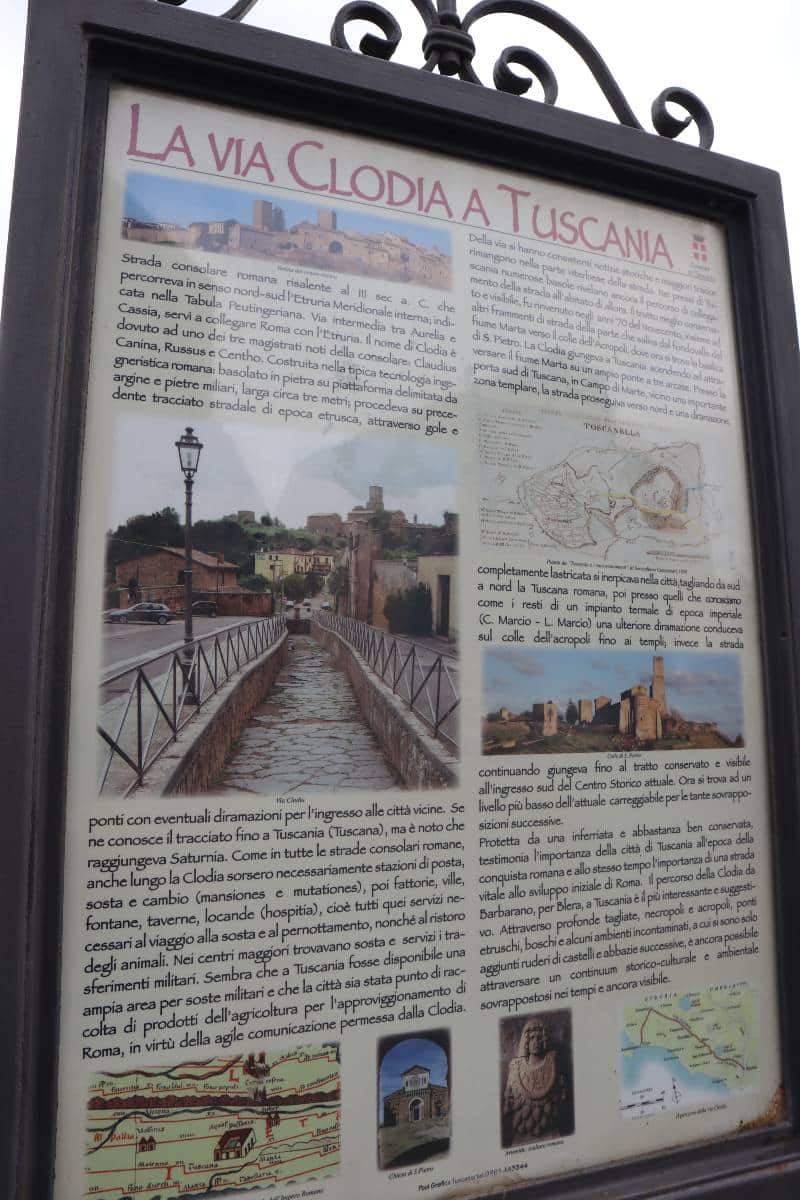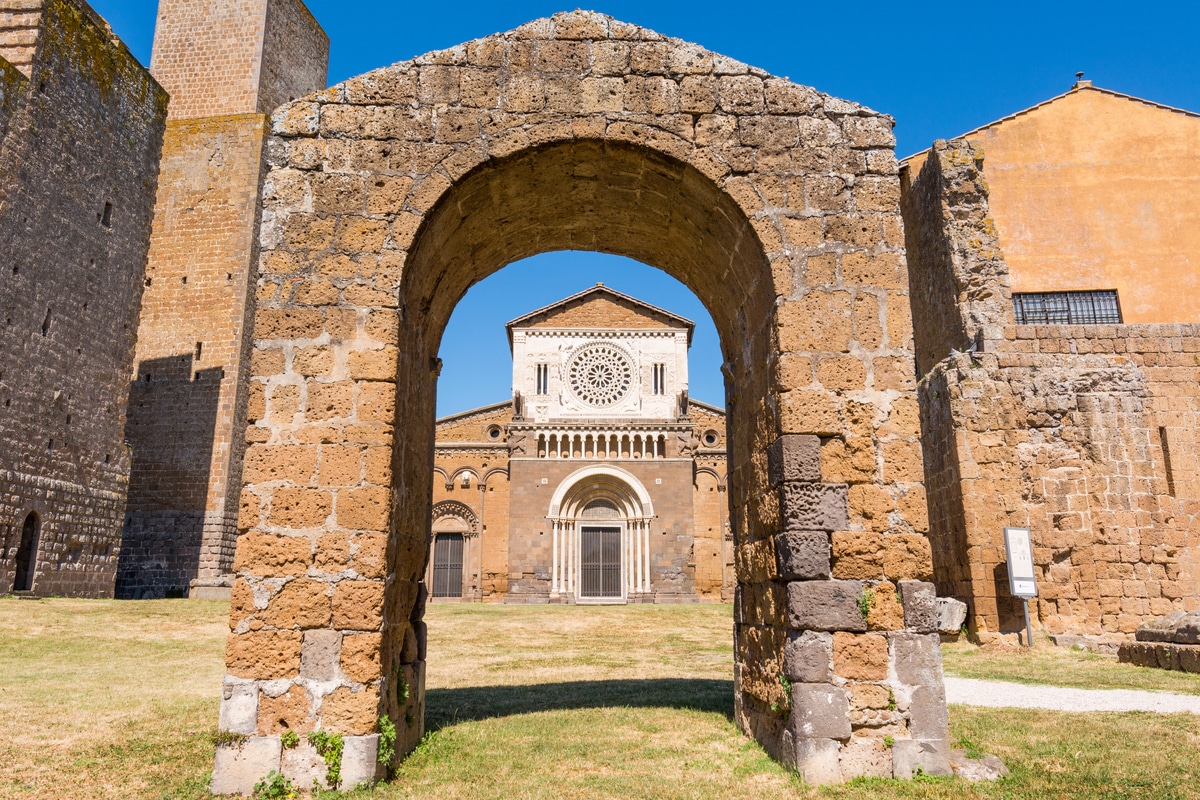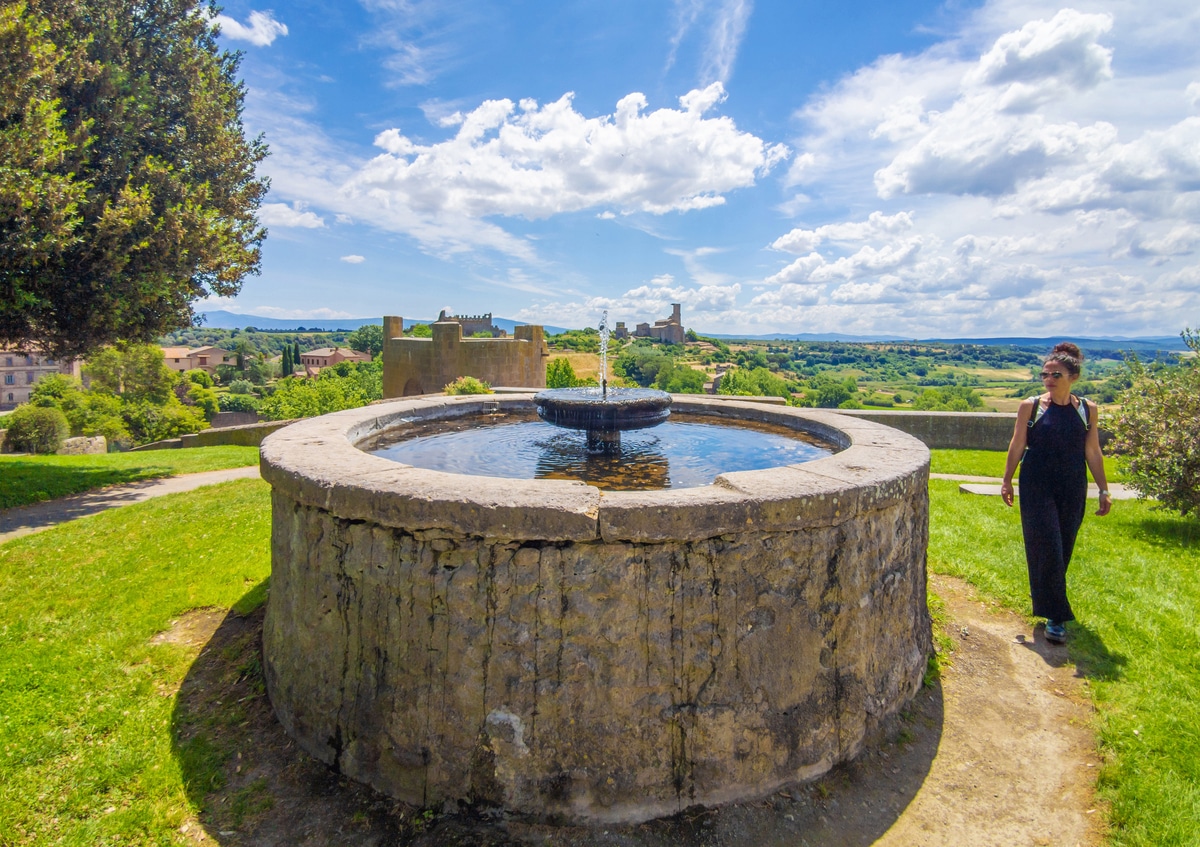Originally, the ancient town spread over two hills, Rivello and San Pietro, exactly where the admirable Romanesque churches of Santa Maria Maggiore and San Pietro now stand. In the immediate vicinity of Tuscania, there are numerous Etruscan necropolis that testify to the great historical importance of the whole area. Its strategic position, not far from the sea and Lake Bolsena, also makes it particularly interesting from an enogastronomic point of view, with typical products ranging from high quality extra virgin olive oil to the wines of Tuscia, which draw their inspiration from two well-established winemaking traditions, those of Lazio and Tuscany.
Historical notes
The historic centre of Tuscania currently stands on an area that has been populated since ancient times. The proof lies in the discovery on Colle San Pietro of a village dating back to the 9th century BC. The whole territory was then occupied for a long period by the Etruscans, as confirmed by the numerous necropolis around the acropolis and along the Marta river. Between the 2nd and 1st centuries B.C. the Romans arrived and the village became a 'municipium' to which the name 'Tuscana' was given, thus becoming an important centre for the collection of goods destined for Rome.
In the 6th century, the Lombards arrived in Tuscania and the town experienced a period of great urban expansion. In 1240 it was conquered by Frederick II of Swabia until, in the 13th century, it was subjugated and dominated by the Church; at that time it was given the curious name of 'Toscanella'. Between the 14th and 15th centuries, despite the struggles between the local families, the city experienced a period of independence until it was totally sacked by Charles VIII during the Italian campaign; it was from that moment that it experienced an interval of heavy decay and abandonment; the village of Tuscania, in fact, was only completely reborn after the Unification of Italy, but in 1971 it was almost totally destroyed by a violent earthquake. As after so many vicissitudes that have seen it reborn from its ashes, also in this case a careful and accurate restoration managed to give back to the population and visitors most of the artistic and architectural beauties that have always characterised it.
What to see in the village
With such a long and troubled history, Tuscania can only offer its guests a great variety of monuments and archaeological sites to visit.
You can start with its Walls, of which about 3 km remain from its original medieval walls that were 5 km long; taking the road to Viterbo, you can admire a large part of them, including the polygonal and square watchtowers.
Arriving from the southern side and following a stretch of the medieval walls, we reach the church of 'Santa Maria del Riposo', which was built on top of an older religious building, almost completely destroyed by the ravages of Charles VIII. Today, the building presents, in many respects, a Renaissance architecture that has been preserved thanks also to the skilful restorations carried out after the earthquake. The nearby convent houses the Museo Nazionale Tuscanese, another unmissable destination for visitors to Tuscania.
From Porta San Marco you enter the village and through Via XII Settembre you reach the church of "Santa Maria della Rosa", with its ancient Romanesque structure, which was also the ancient cathedral of the city, inside which there are still valuable frescoes from the 13th century. The next leg of the tour takes you to Piazza Mazzini, where you will find the Fountain of Montascide or San Marco, while the oldest spring in Tuscania is located in Largo della Fontana delle Sette Cannelle or del Butinale.
Among the most representative civil buildings to visit are the Palazzo Comunale, the Palazzo Baronale, the Lavello tower and the modern Teatro Comunale, whose square was the centre of medieval life with the Torre del Bargello and the Palazzo del Podestà.
Just outside the town centre, the beautiful churches of San Pietro and Santa Maria Maggiore stand on two hills. The former was built in the 8th century and was later remodelled, including the completion of the façade. The latter was instead built on the remains of a large Roman construction and is the oldest place of worship in the village.




























